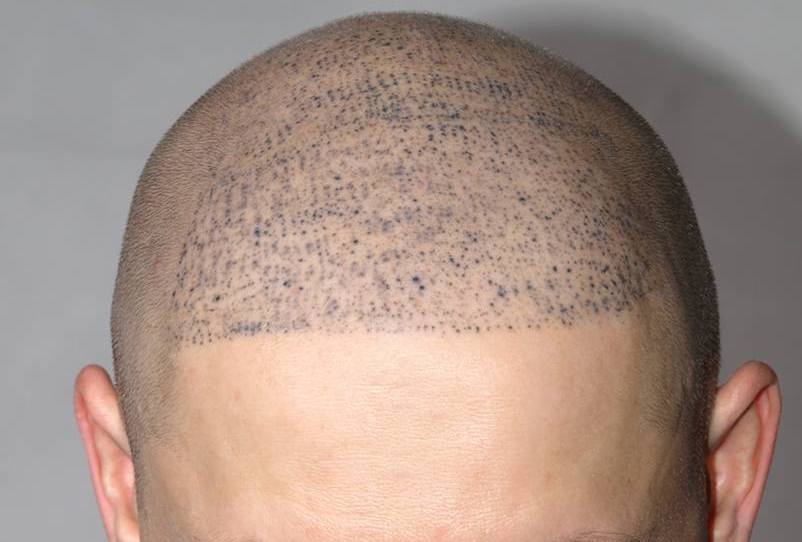Alopecia, a condition that leads to partial or complete hair loss, affects both men and women across the globe. It can be triggered by genetics, autoimmune responses, stress, or hormonal imbalances. Beyond the physical effects, alopecia often takes an emotional toll, impacting one’s confidence and self-image. Many people search for solutions that look natural and restore their appearance without surgery or extensive downtime — and that’s where Scalp Micropigmentation (SMP) comes in. In recent years, Scalp Micropigmentation in Dubai has emerged as a trusted and effective option for individuals dealing with alopecia. The procedure is designed to create the illusion of fuller hair by skillfully replicating natural follicles on the scalp. For those struggling with bald spots caused by alopecia, SMP offers an immediate visual improvement that enhances both appearance and confidence.
How Scalp Micropigmentation Helps With Alopecia
Scalp Micropigmentation is a non-surgical treatment that uses fine micro-needles to deposit pigment into the upper layers of the skin. Each tiny pigment mark resembles a hair follicle, giving the scalp the appearance of natural hair growth. For individuals with alopecia, SMP helps camouflage the affected areas by restoring the illusion of hair density.
This technique works effectively for various types of alopecia, including:
Alopecia Areata: Small, round bald patches that appear suddenly.
Alopecia Totalis: Complete hair loss on the scalp.
Alopecia Universalis: Hair loss across the entire body, including eyebrows and lashes.
Traction Alopecia: Hair loss caused by tension or tight hairstyles.
Regardless of the type, SMP provides a consistent, natural-looking result that blends seamlessly with surrounding hair or skin tone.

The Process of Covering Alopecia Bald Spots
The treatment begins with a personalized consultation, where the specialist evaluates the scalp, the extent of hair loss, and the type of alopecia. Once the plan is set, the pigment color is matched to your natural hair tone and skin color for a seamless blend.
Preparation
The scalp is cleansed and, if needed, a topical numbing cream is applied for comfort. The practitioner designs a natural-looking hairline or fills in patchy areas depending on the client’s needs.
Pigment Application
Using precision micro-needles, the technician deposits small dots of pigment across the bald or thinning areas. The density and pattern mimic real hair follicles, creating a realistic appearance of stubble or thickness.
Layering and Refinement
The treatment typically requires multiple sessions spaced over a few weeks. Each session adds layers of pigment and depth to achieve a more natural, three-dimensional look. The gradual process allows the scalp to heal between sessions while ensuring even pigment distribution.
Why SMP Is Ideal for Alopecia Sufferers
Scalp Micropigmentation is a practical and empowering choice for people living with alopecia for several reasons:
Instant visual improvement: Results are visible right after the first session.
Non-surgical and safe: No incisions, anesthesia, or recovery time needed.
Customizable coverage: Works for small patches or full scalp treatments.
Natural appearance: The fine pigment dots perfectly imitate real hair follicles.
Confidence restoration: Restores self-esteem and a sense of normalcy.
Unlike wigs or hair fibers that require daily upkeep, SMP provides a long-term, low-maintenance solution.
Realistic Expectations and Longevity
SMP doesn’t stimulate hair growth — instead, it creates a lasting illusion of density. The pigments used are semi-permanent, meaning they gradually fade over time but do not change color or turn blue or green like traditional tattoo ink. Most clients enjoy their results for several years before needing minor touch-ups.
Proper aftercare, such as avoiding direct sunlight and using gentle scalp care products, helps prolong pigment vibrancy. Even when the pigment fades slightly, the natural shading effect continues to look realistic.
Why Dubai Is a Trusted Destination for SMP
Dubai has become a global hub for advanced cosmetic treatments, and Scalp Micropigmentation is one of its most sought-after options for hair restoration. Practitioners in Dubai are well-trained in addressing various alopecia patterns, ensuring customized solutions for every client.
Clinics in the city use state-of-the-art equipment, sterile techniques, and medical-grade pigments that are safe for all skin types. This commitment to quality and precision ensures that each procedure delivers natural and satisfying results. Whether the client is dealing with mild patchiness or complete baldness, SMP in Dubai offers artistry, accuracy, and long-lasting outcomes.
Aftercare
Following proper aftercare is essential for maintaining the best results, especially for individuals with alopecia-prone or sensitive scalps. Some aftercare recommendations include:
Avoid washing the scalp for at least 3–4 days after treatment.
Refrain from heavy sweating and direct sunlight during healing.
Do not scratch or rub the treated area to prevent pigment disturbance.
Use gentle, fragrance-free products once the scalp has healed.
Schedule periodic touch-ups every few years to maintain color and definition.
Adhering to these guidelines ensures the scalp remains healthy and the results stay sharp and natural-looking.
Conclusion
For those living with alopecia, Scalp Micropigmentation offers a renewed sense of confidence and a natural-looking solution that requires minimal upkeep. It effectively conceals bald patches, restores the appearance of density, and delivers long-lasting, realistic results. As one of the leading destinations for this treatment, Scalp Micropigmentation Dubai combines artistic precision with medical expertise, helping clients overcome the visible effects of alopecia and embrace a revitalized appearance with pride.
